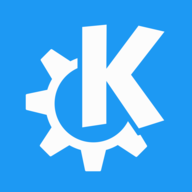Been waiting for tree structure! Thank you for the hard work on this, love this project.
astrsk
- 1 Post
- 114 Comments
For a foundation who’s entire ethos is stability, it makes sense and is a welcome change.

 21·3 months ago
21·3 months agoOf course not, they are owed this because of oppression or something. Fuck.

 33·3 months ago
33·3 months agoSo much for all those studio purchases. What a waste.

 2·3 months ago
2·3 months agoYes mathematically it scales perfectly. Except in the end it still gets rasterized. Because you have carrying line thicknesses in the icons themselves, it’s important to check how the icons look at common scales / sizes on a regular monitor resolutions such as 1080p, 1440p, and 4k.

 1·3 months ago
1·3 months agoNo no, I understand what it shows. I’m suggesting the blended version looks nice and could be an extra option.

 8·3 months ago
8·3 months agoCould be useful to check scaling. How’s it look really small to really large. Might help inform some of the line work decisions. Looks nice with all the colors!
Also, the way you present the bottom row with a blended gradient, might be its own nice set, preserving the blending so each icon has a bit of multiple colors to it.
It’s the guts of a pair of headphones, retrofitted with a battery and audio jack. Consider it a Bluetooth audio receiver and DAC with standard audio output.

 31·4 months ago
31·4 months agoI just want id to do something else. Doom is fun and all but they’ve kinda perfected it.
I would make the case for proxmox on the machine so you can divvy up the hardware as you see fit— but also setup the hard drives as a zfs1 pool (1 redundancy failure allowed). This way you can make multiple isolated machines or use LXC containers directly for apps, services, etc. while benefiting from ZFS’s excellent performance and reliability. I would say that TrueNAS Scale has been a bit of a letdown for me because it feels bloated, easy to make mistakes with complicated setups, and I have less control over the hardware. I don’t like how updates have fully broken apps. That said it is a reliable ZFS wrapper with more bells and whistles in the UI over what proxmox offers— caveat being that both can do everything if you want to take the time to learn ZFS commands.
There is also the TrueNAS based alternative HexOS that is more beginner friendly for just getting a nice NAS setup fast while still supporting apps / containers.
Thank you! This is a wonderful post, I will take another shot this weekend and hopefully something will stick this time :)
Any advice? I’m trying to get a handle on it but I’m having trouble remembering anything or finding what to do in the first place.
Jetbrains Rider for C# and VSCodium for arduino / microcontroller programming.
I’m trying to learn my way around the tmux + neovim life but the learning curve might be too much for me.

 141·4 months ago
141·4 months agoNot to mention— the value for that 30% on platform + 0% off platform cut for steam is insane. The payment processing, storage, hosting, worldwide routing and caching, multiplayer sdks and integrations, and dozens of other publisher / developer available tools are worth every single penny to have valve handling for you.
The value is there and so is the install base.

 15·4 months ago
15·4 months agoJust a reminder that as long as you don’t need any kind of platform hosting or complex multi-user setup, git itself works fine on a remote machine as your server, even just on LAN. (As always, just setup an ssh key on the two machines so ssh commands are secure and don’t require passwords all the time)
> cd /my/repos > ssh user@10.x.y.z ‘mkdir /home/user/repos/new_repo.git && cd $_ && git init --bare’ > git clone user@10.x.y.z:/home/user/repos/new_repo.git

 5·4 months ago
5·4 months agoDefinitely splatoon, most likely splatoon 3.
What about a hard drive made of network pings?

 5·4 months ago
5·4 months agoGoddamn, panic is doing Fever in full??

 9·5 months ago
9·5 months agoI will always recommend Ben Eater’s breadboard computer 6502 project for anyone who wants to know how it works. The 8-bit breadboard computer project as the next step too, to really dive into all the pieces. But the 6502 project is a nice entry point into hardware itself as well as the basic components of processor and memory. How and what the 1s and 0s are doing and how to make them do what you want them to do. Getting up to a working character display and serial input for a keyboard to type is such a satisfying process that takes only a few hours if you kinda know what you’re doing and a few days if you know nothing.




CLI, nvimdiff 90% of the time. If I’m on a windows workstation, I might end up using git extensions GUI as it helps me visualize what’s happening a little better sometimes.